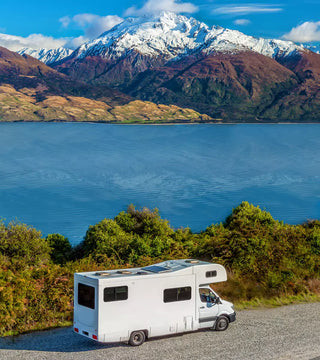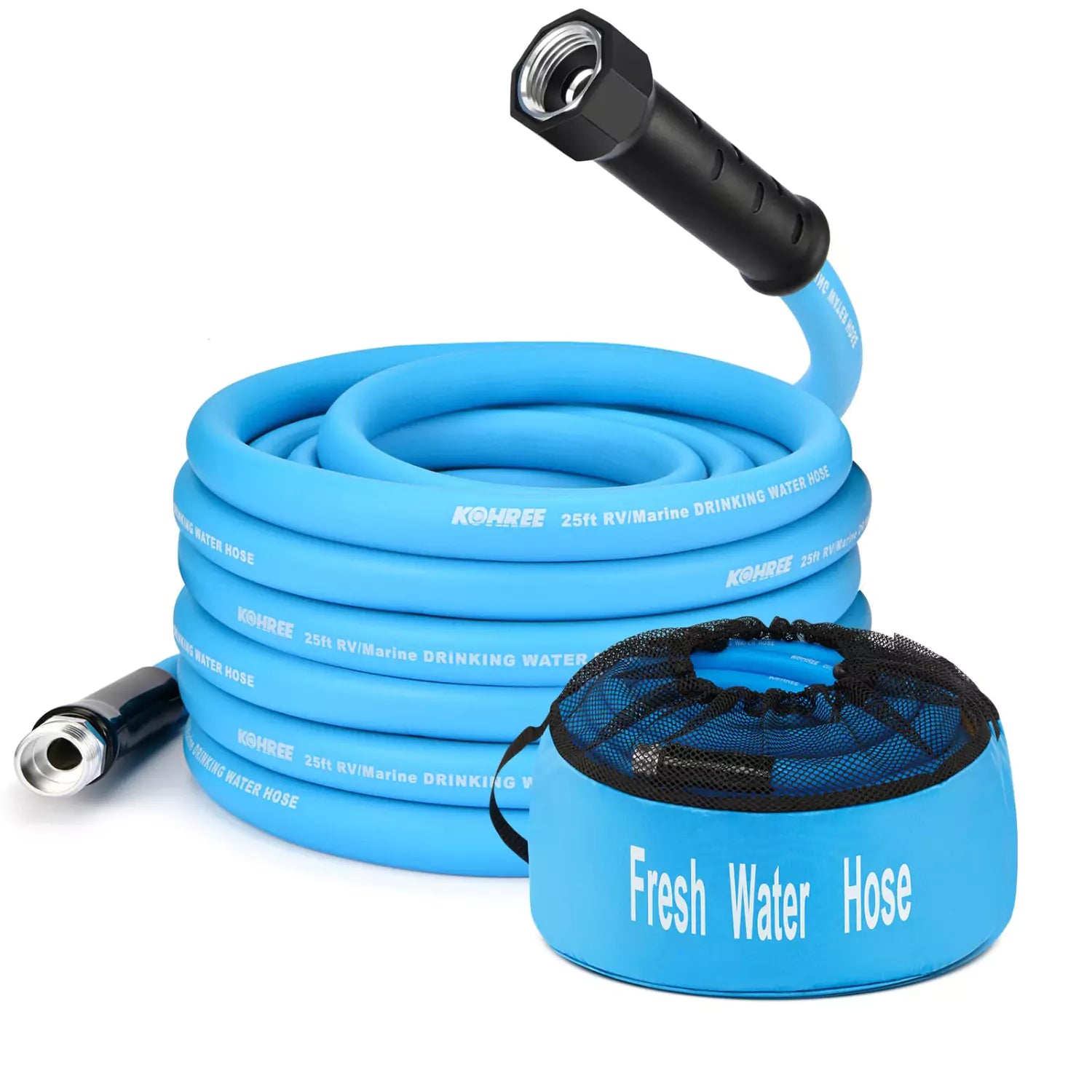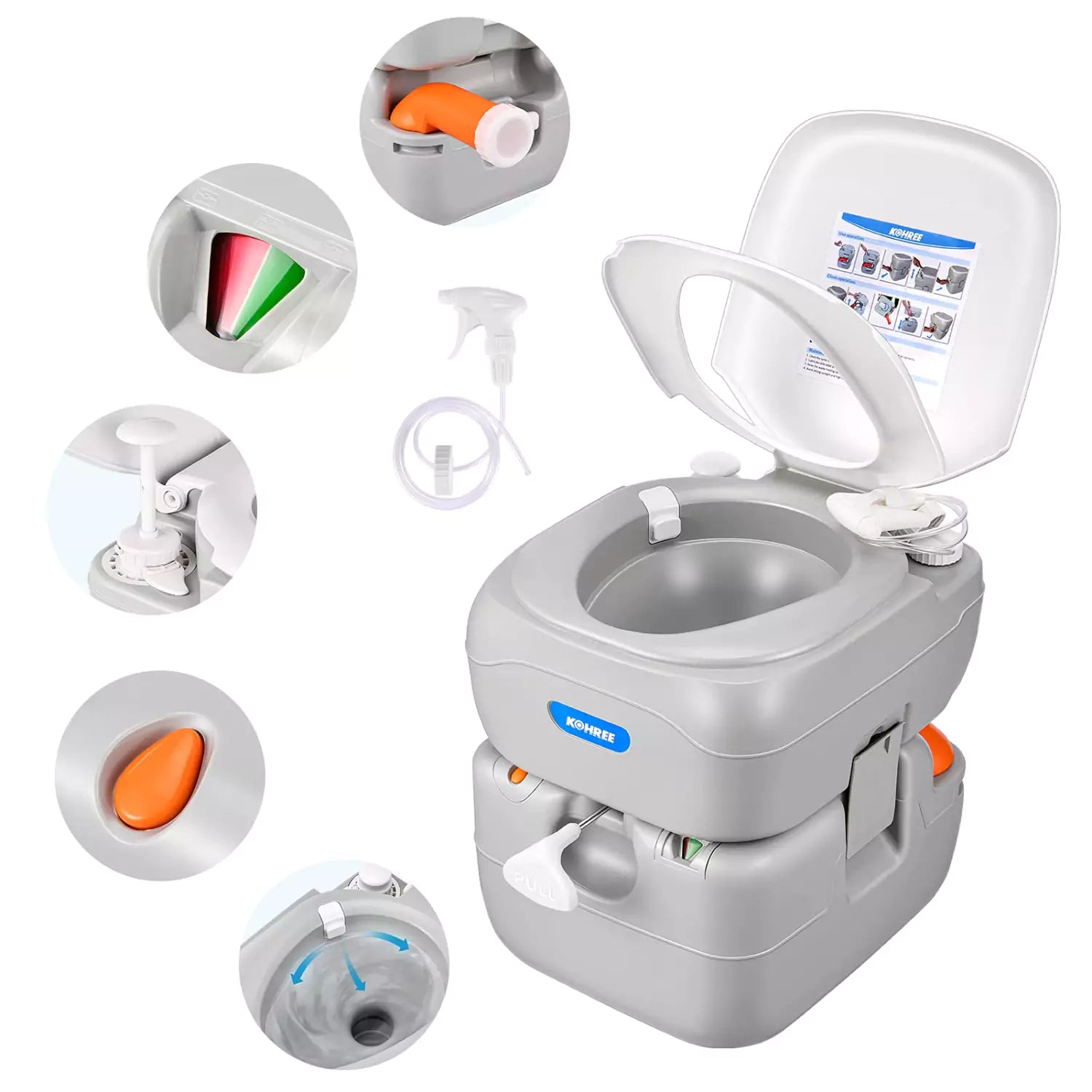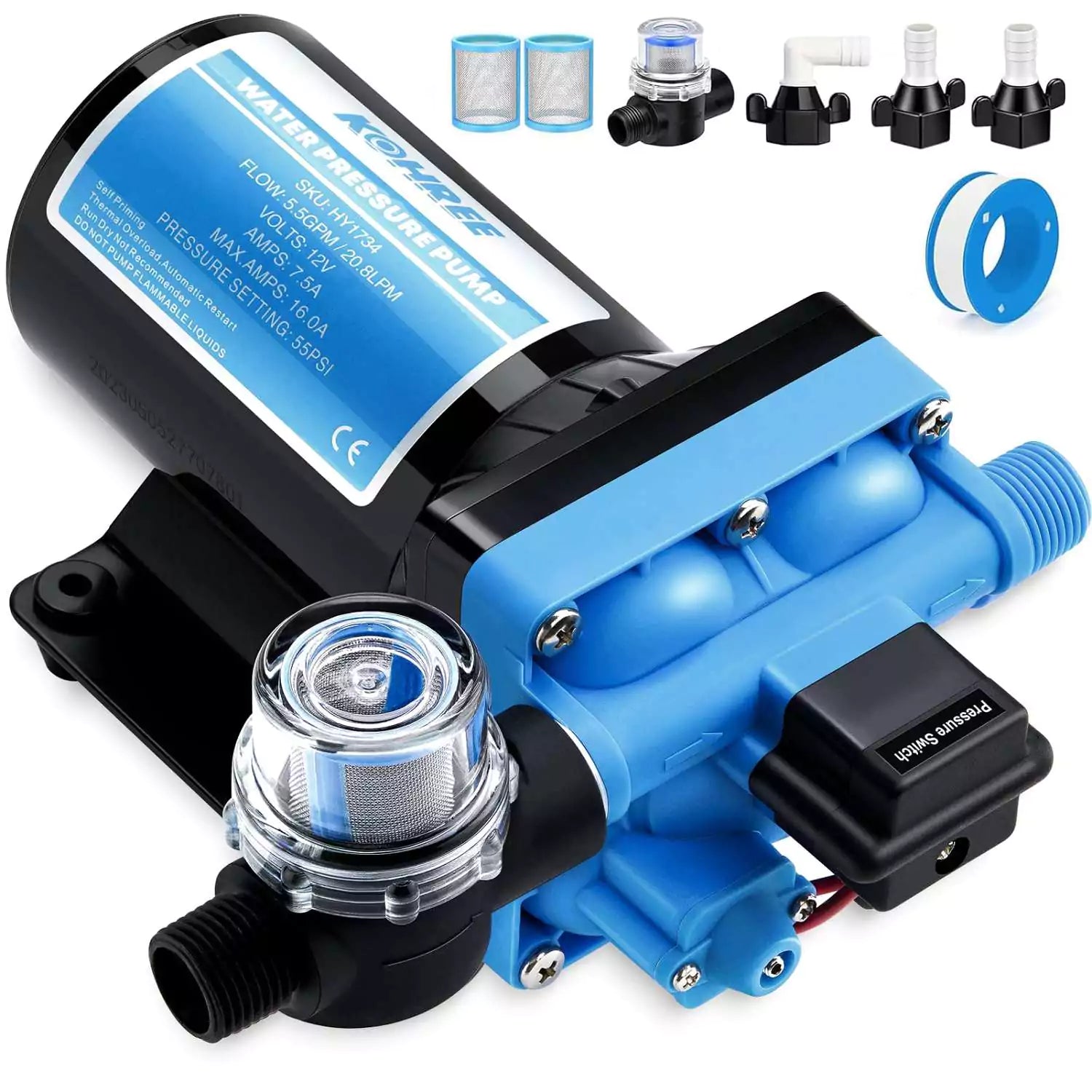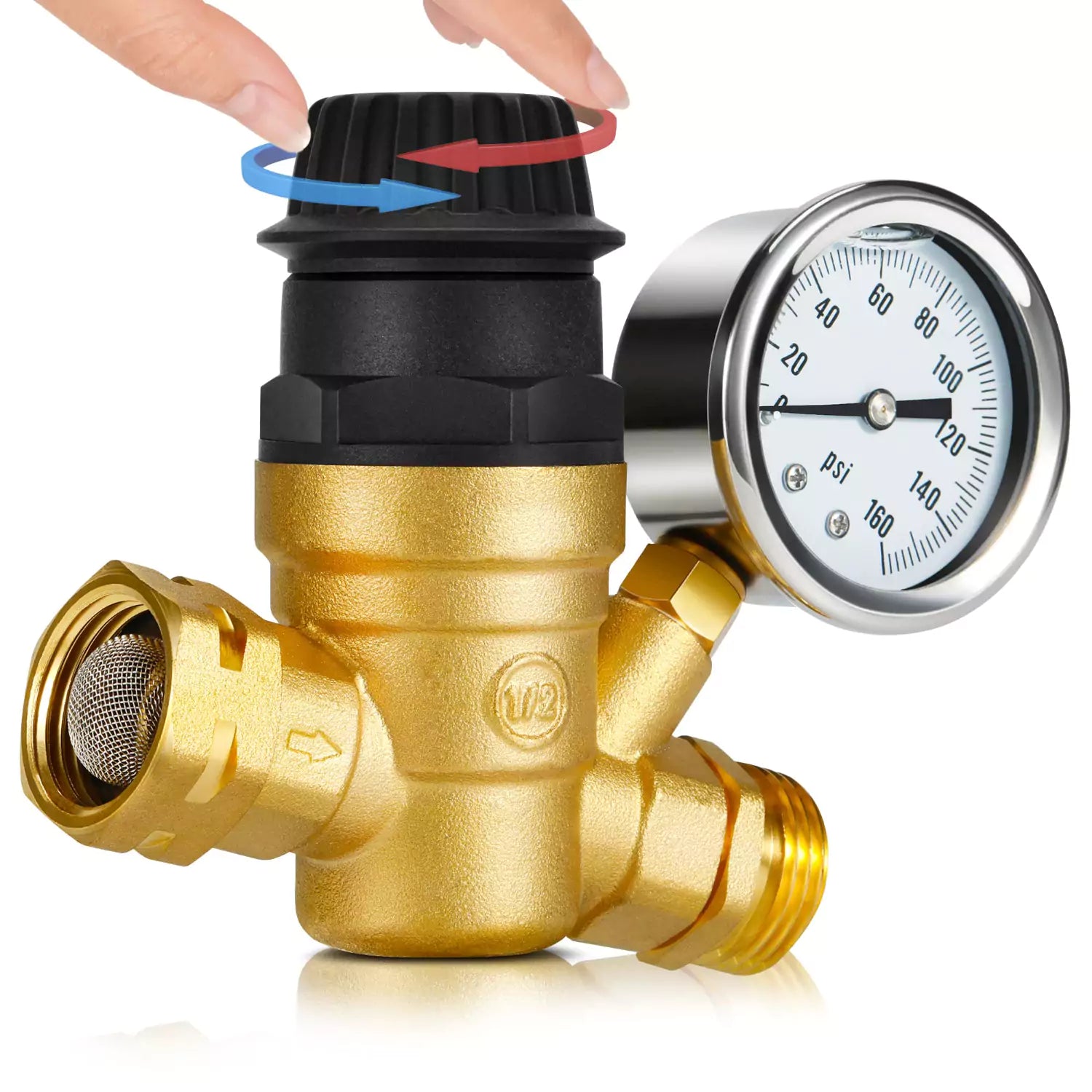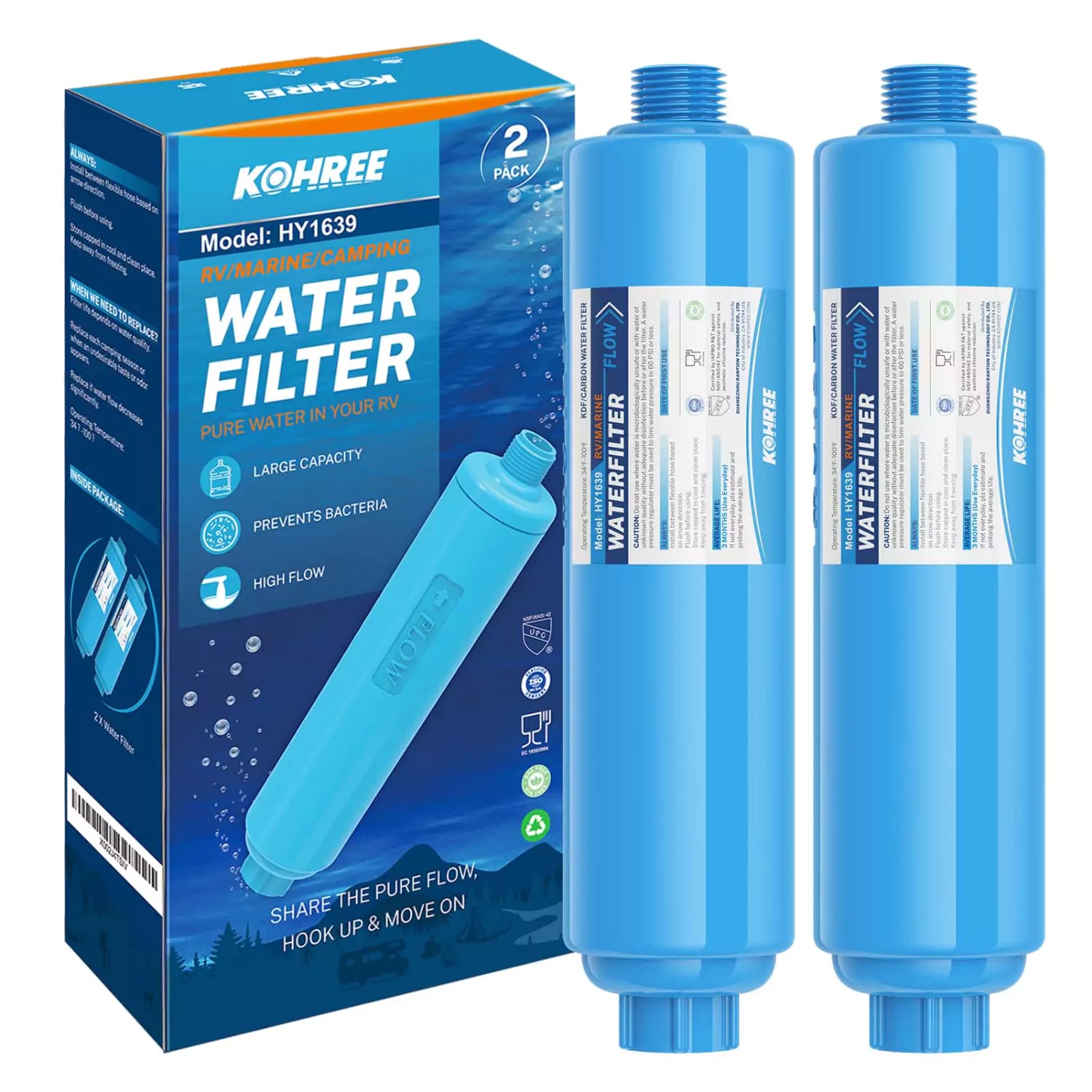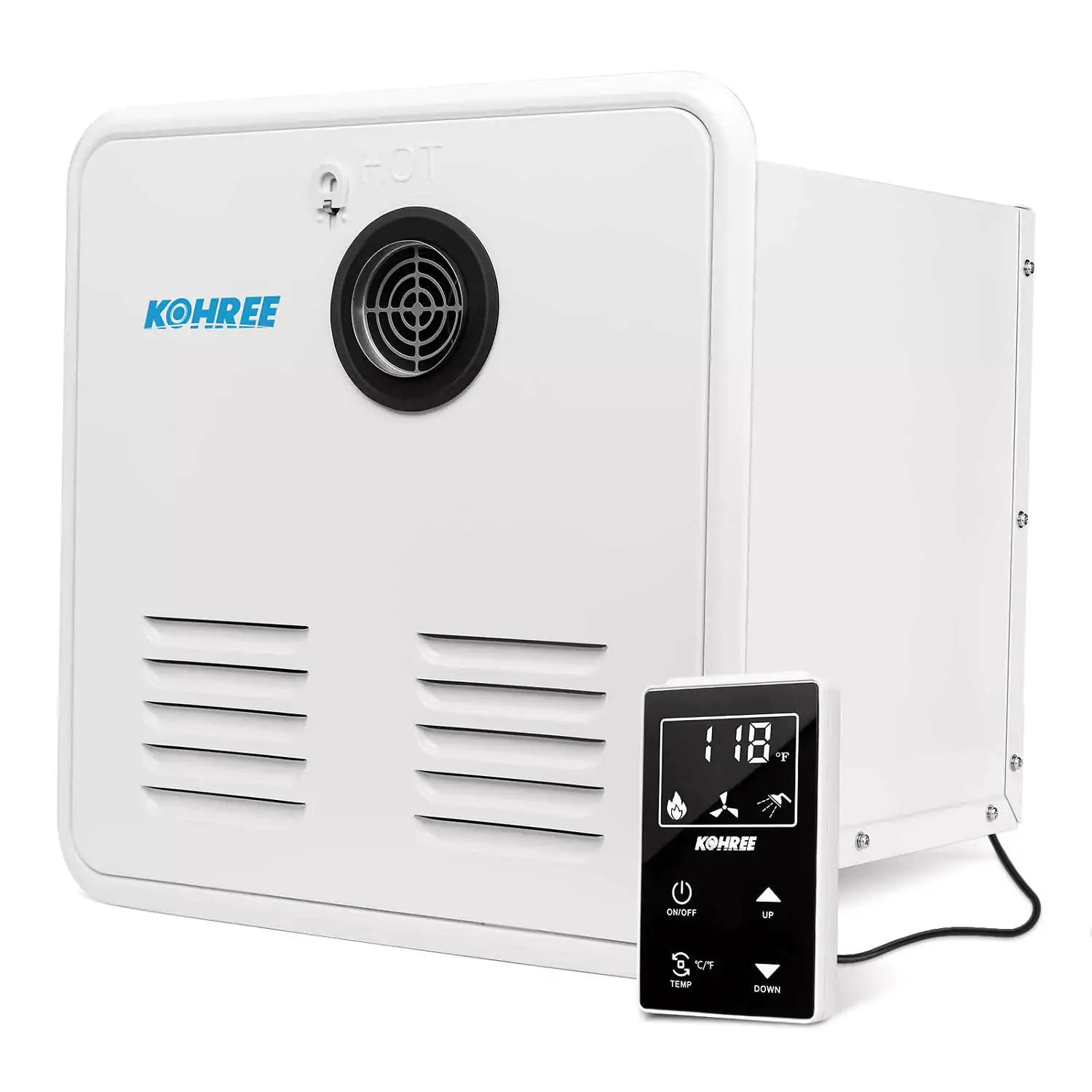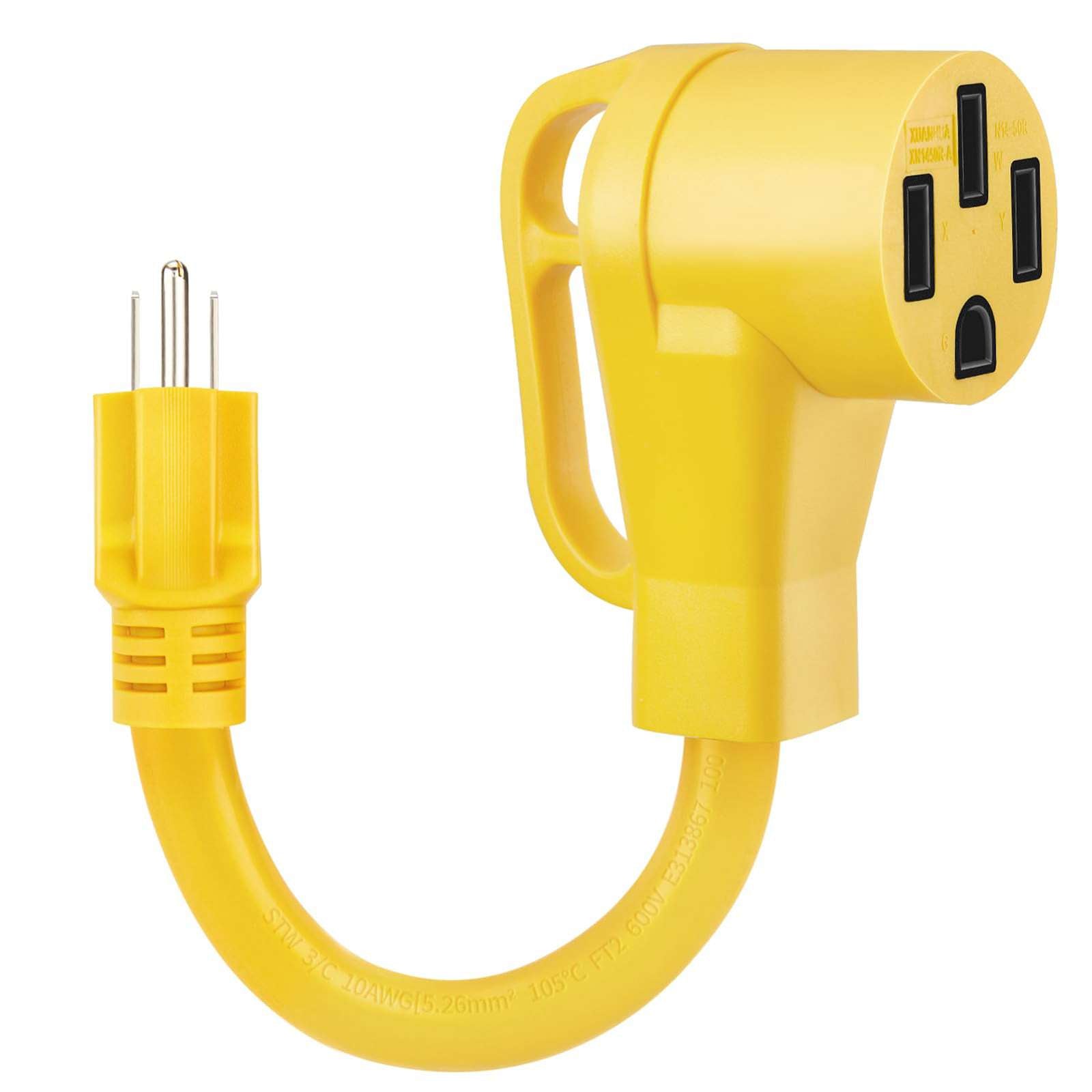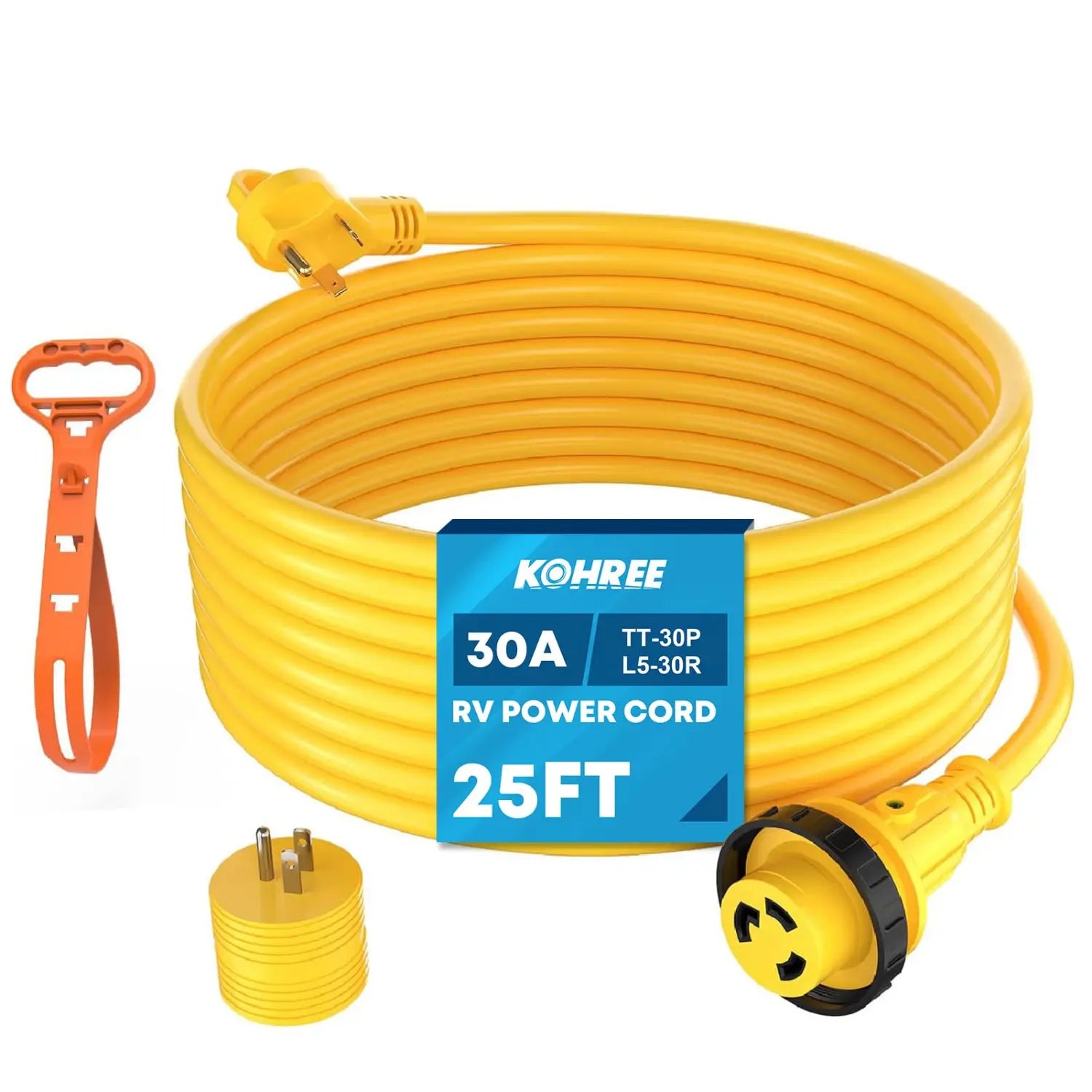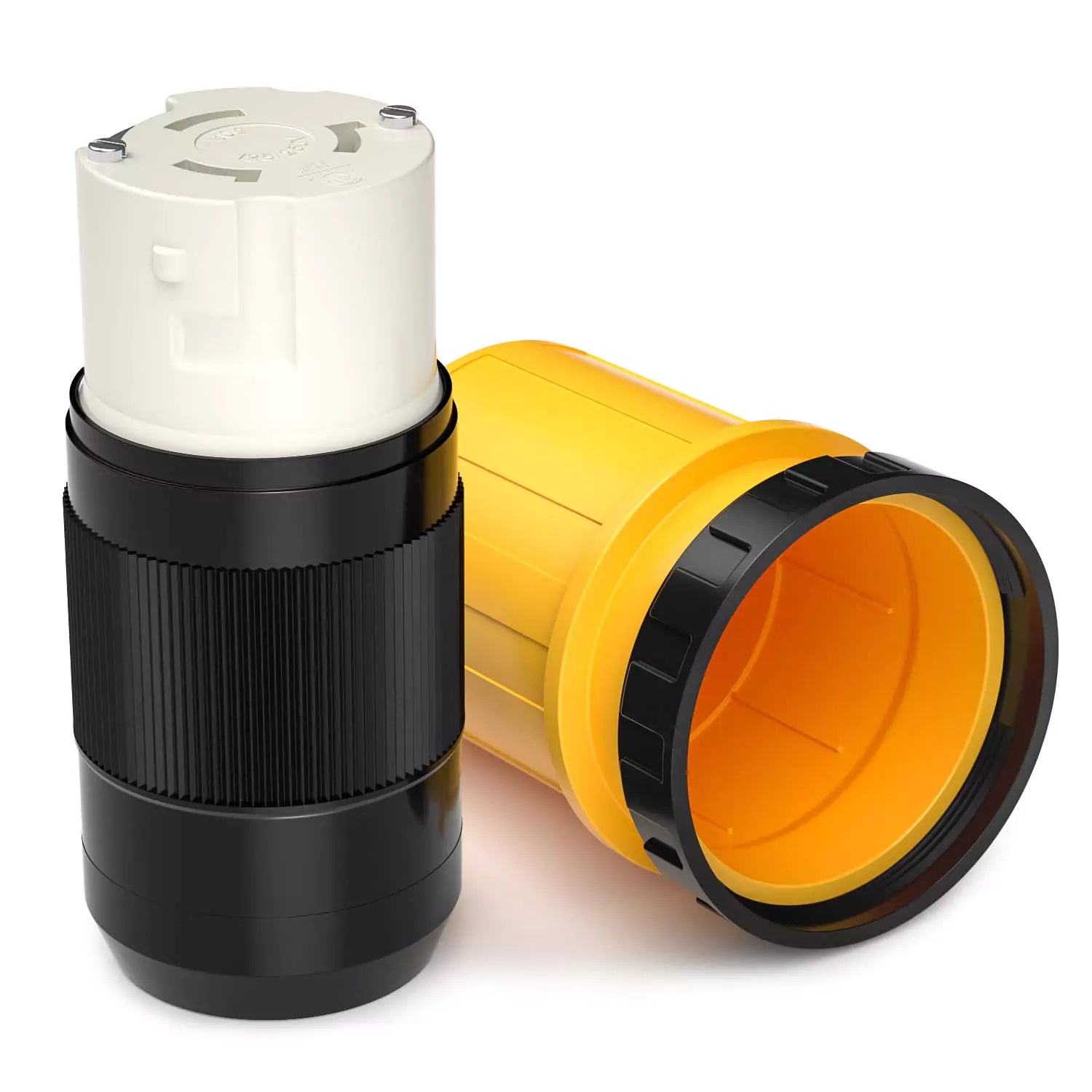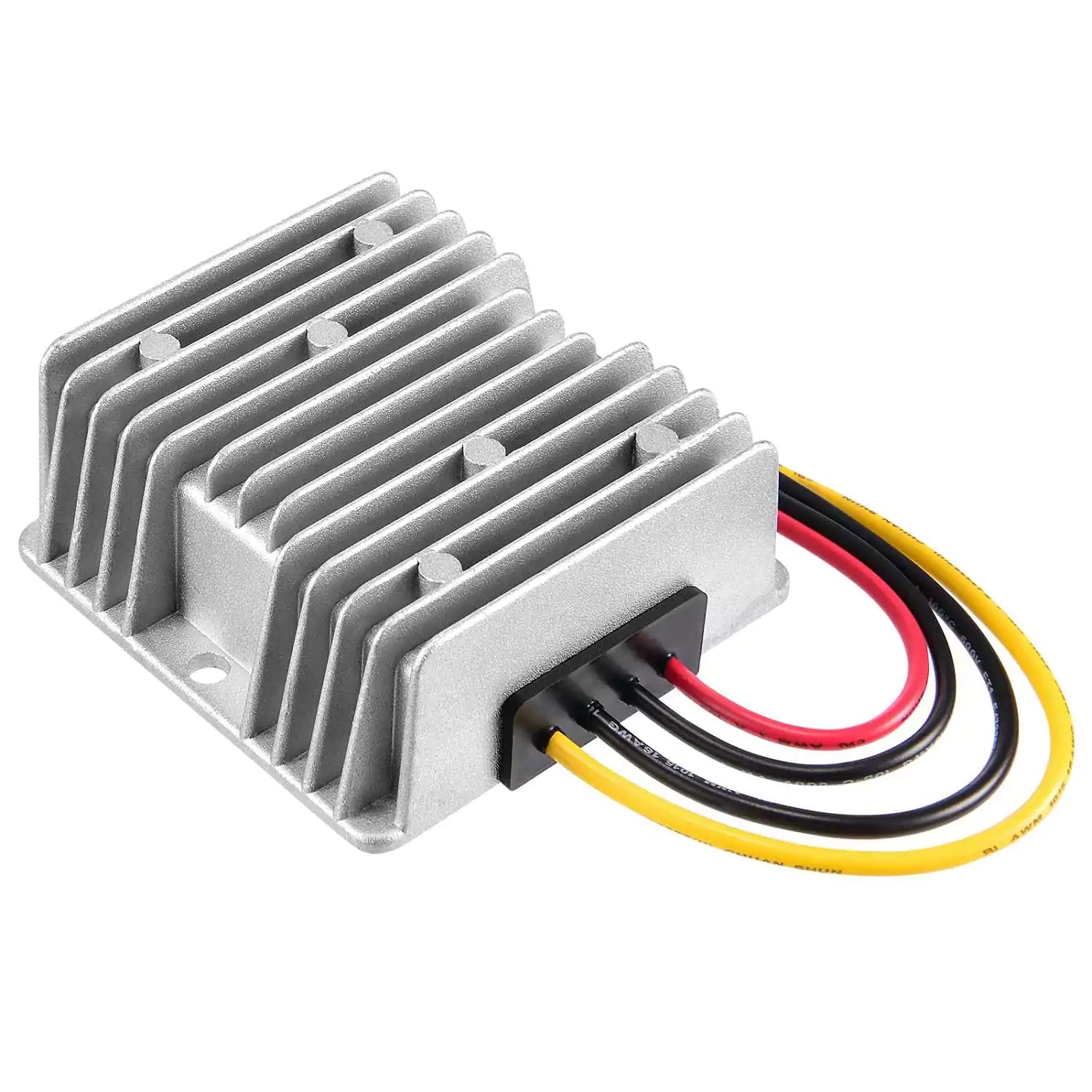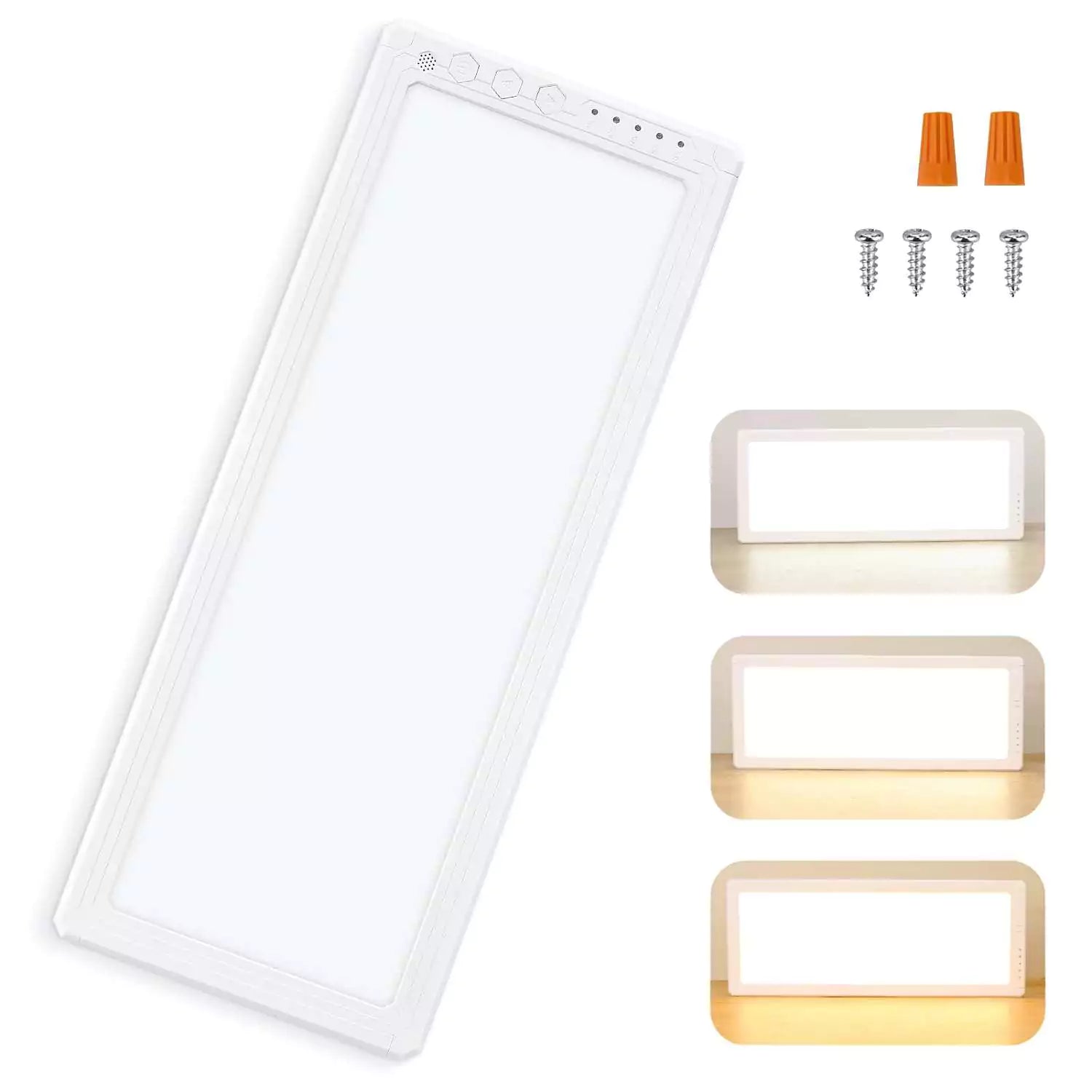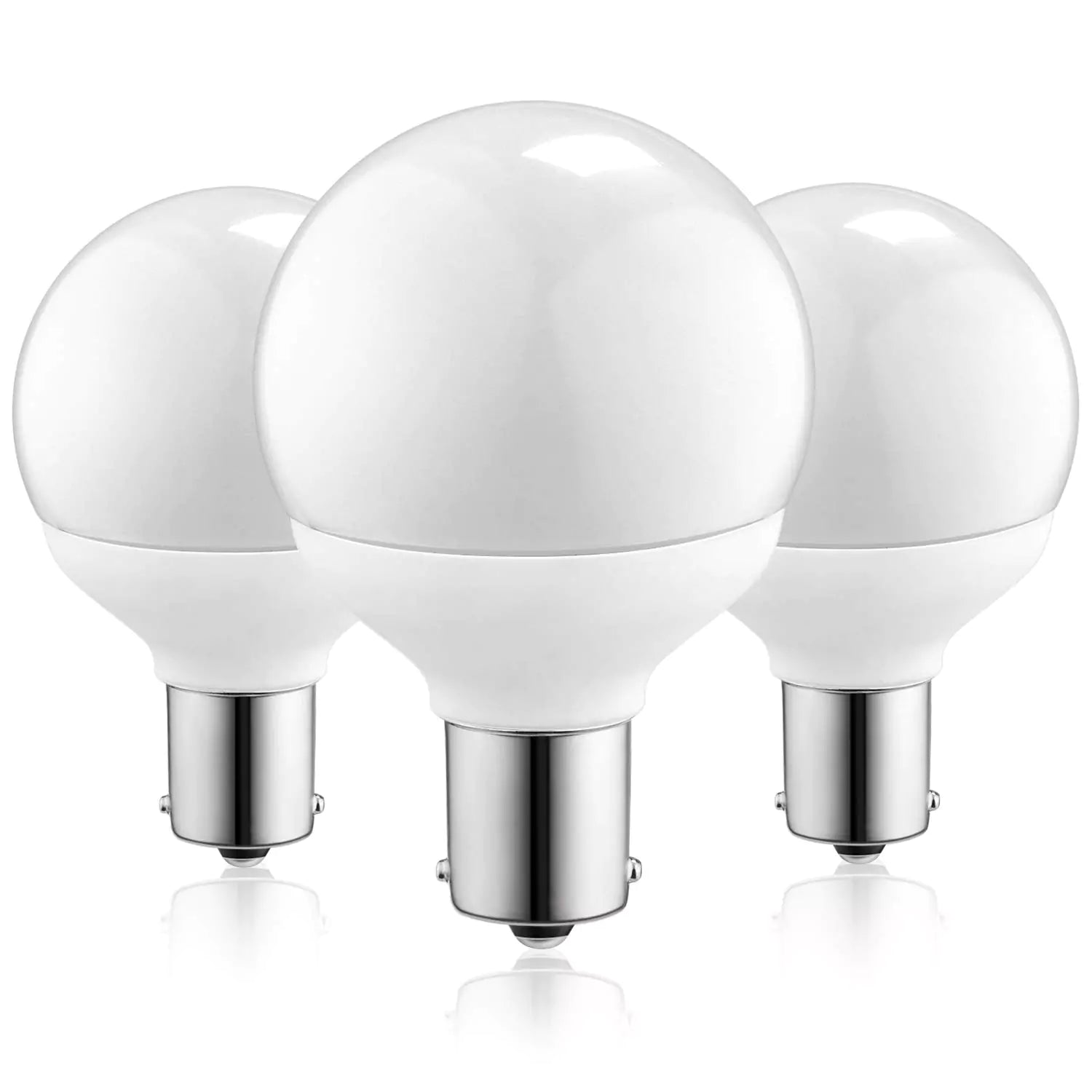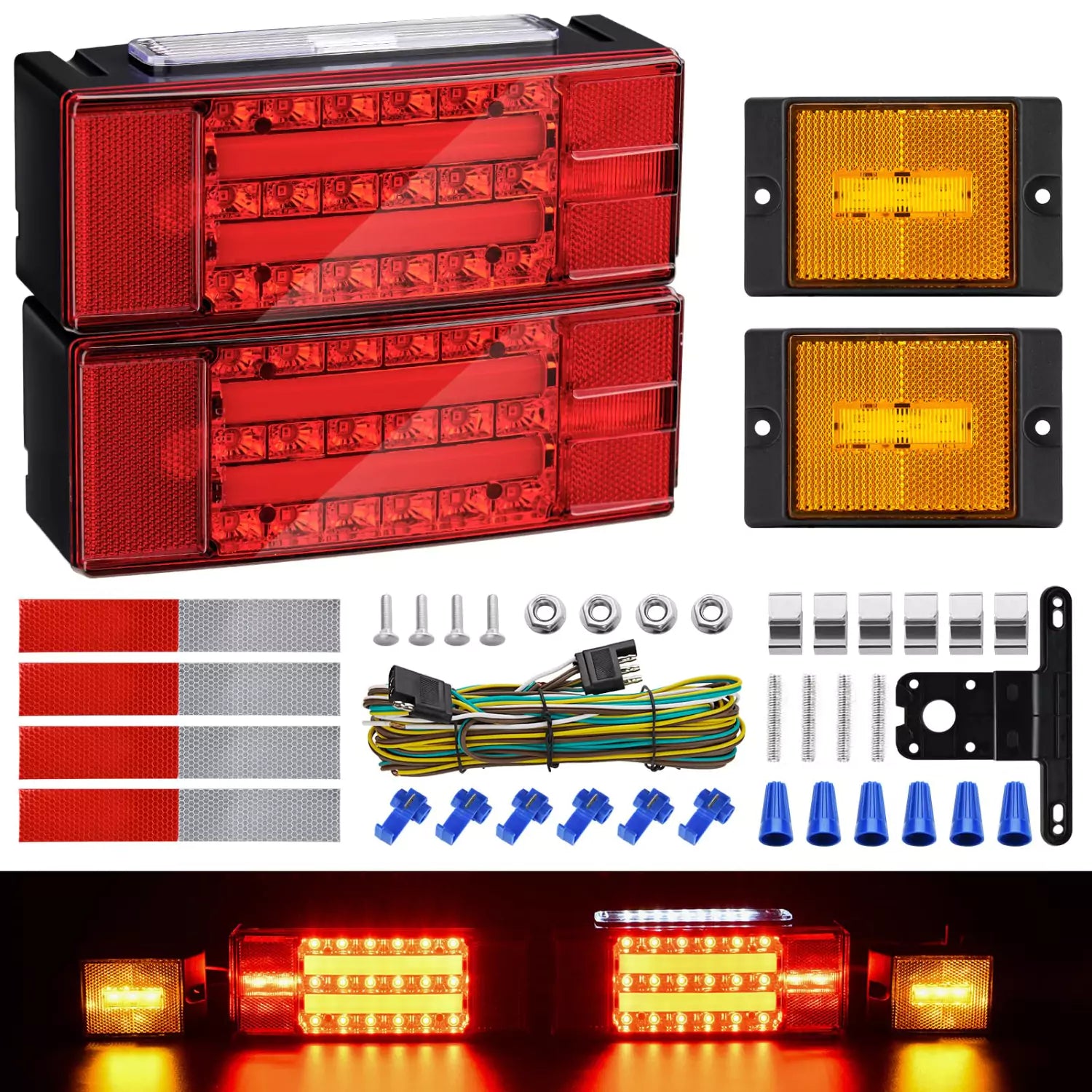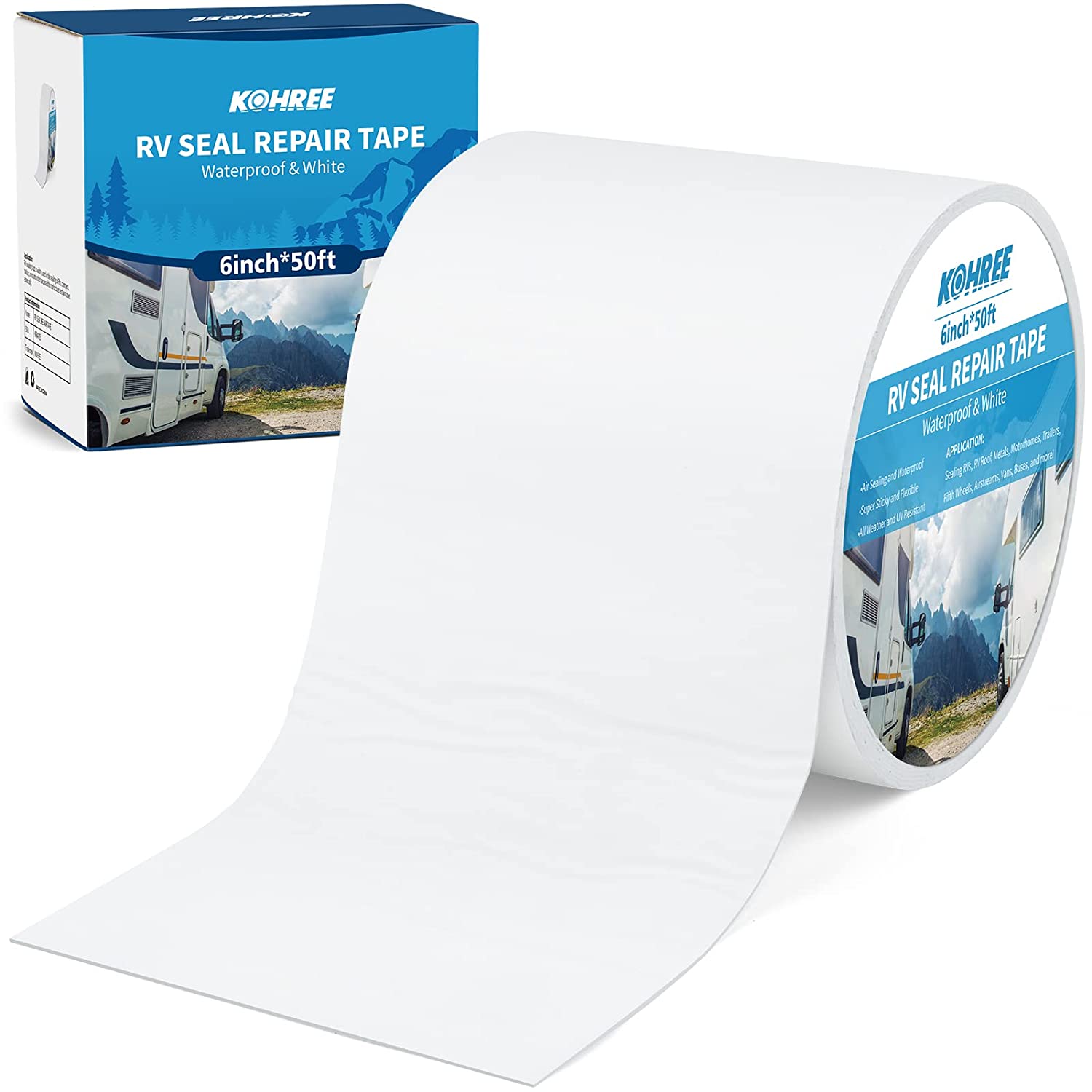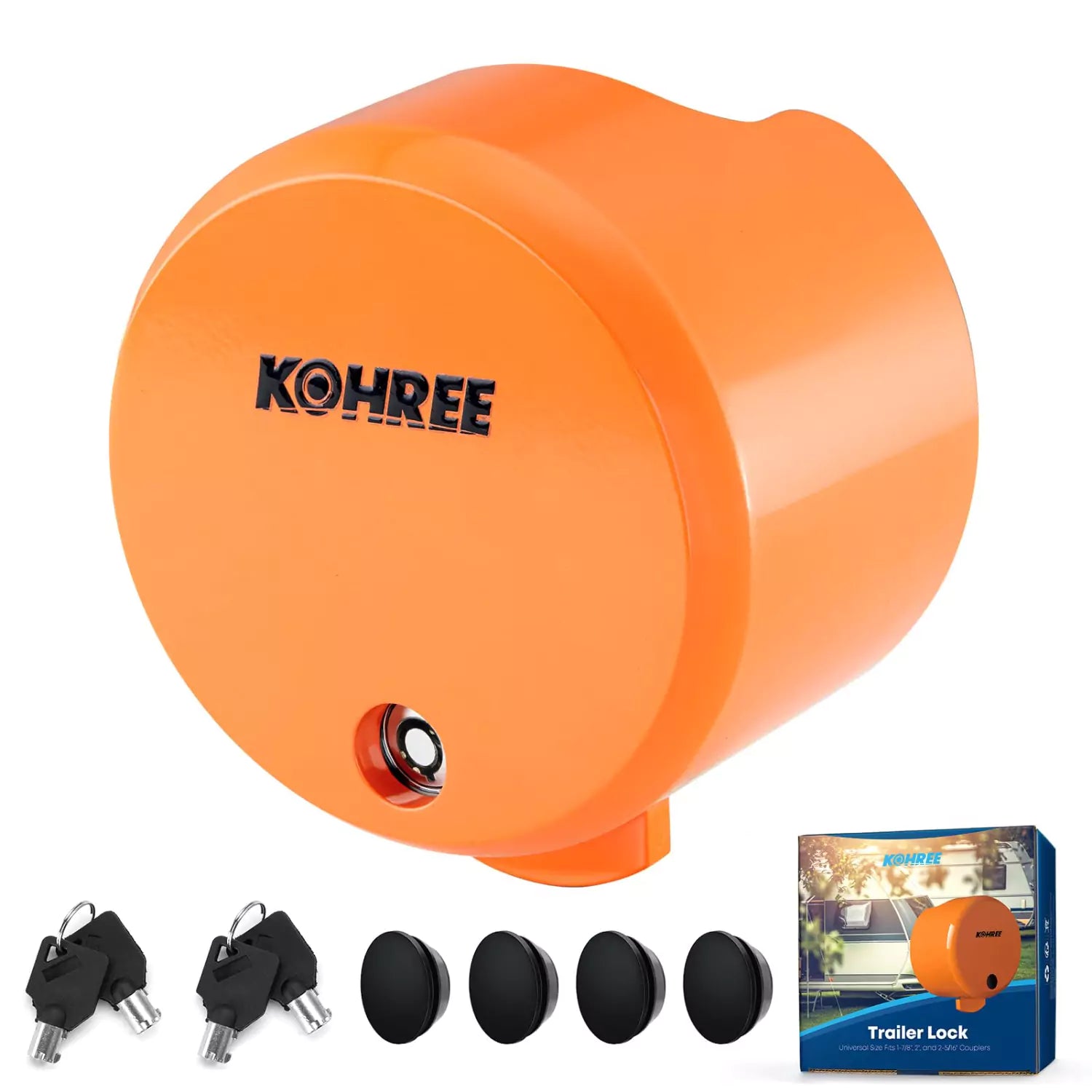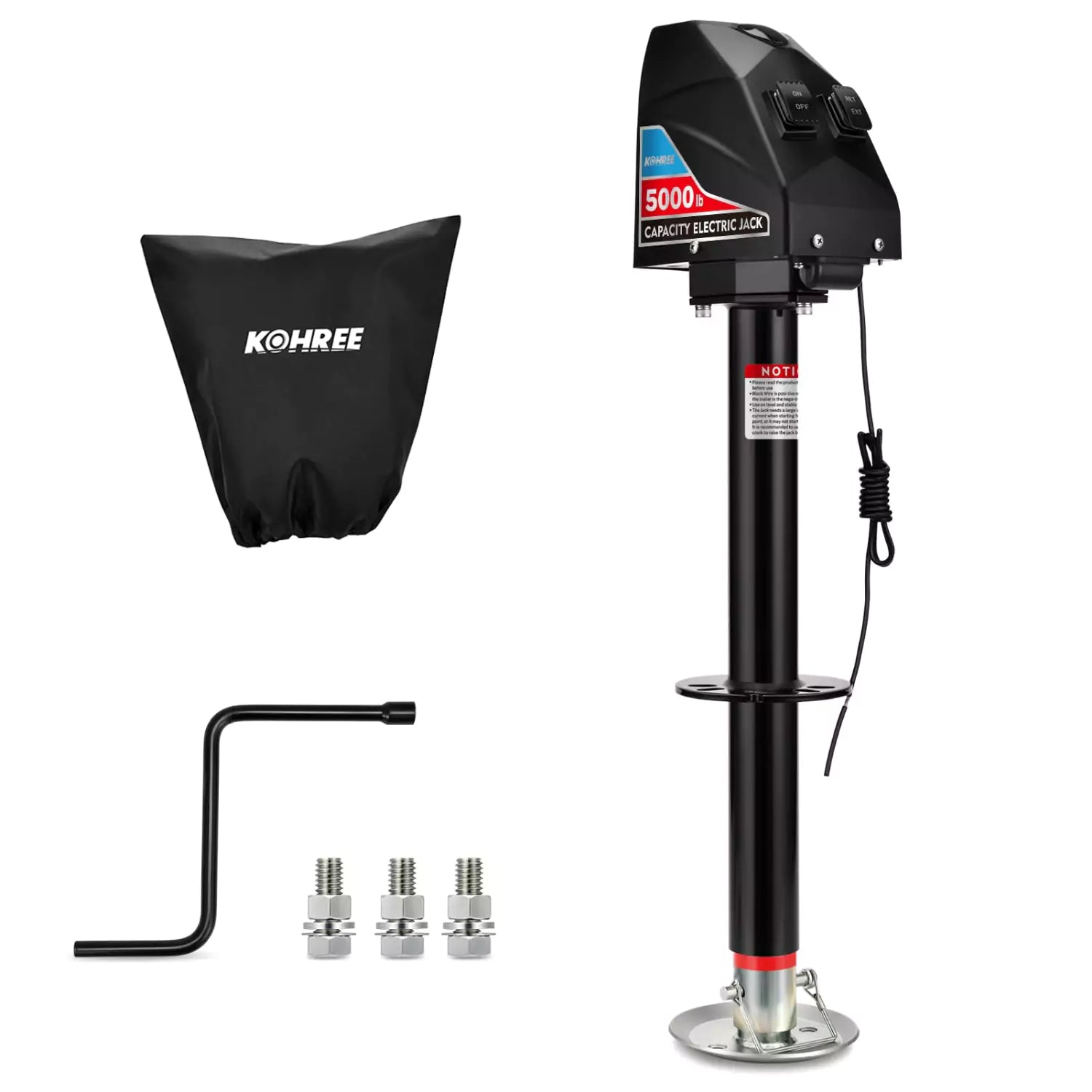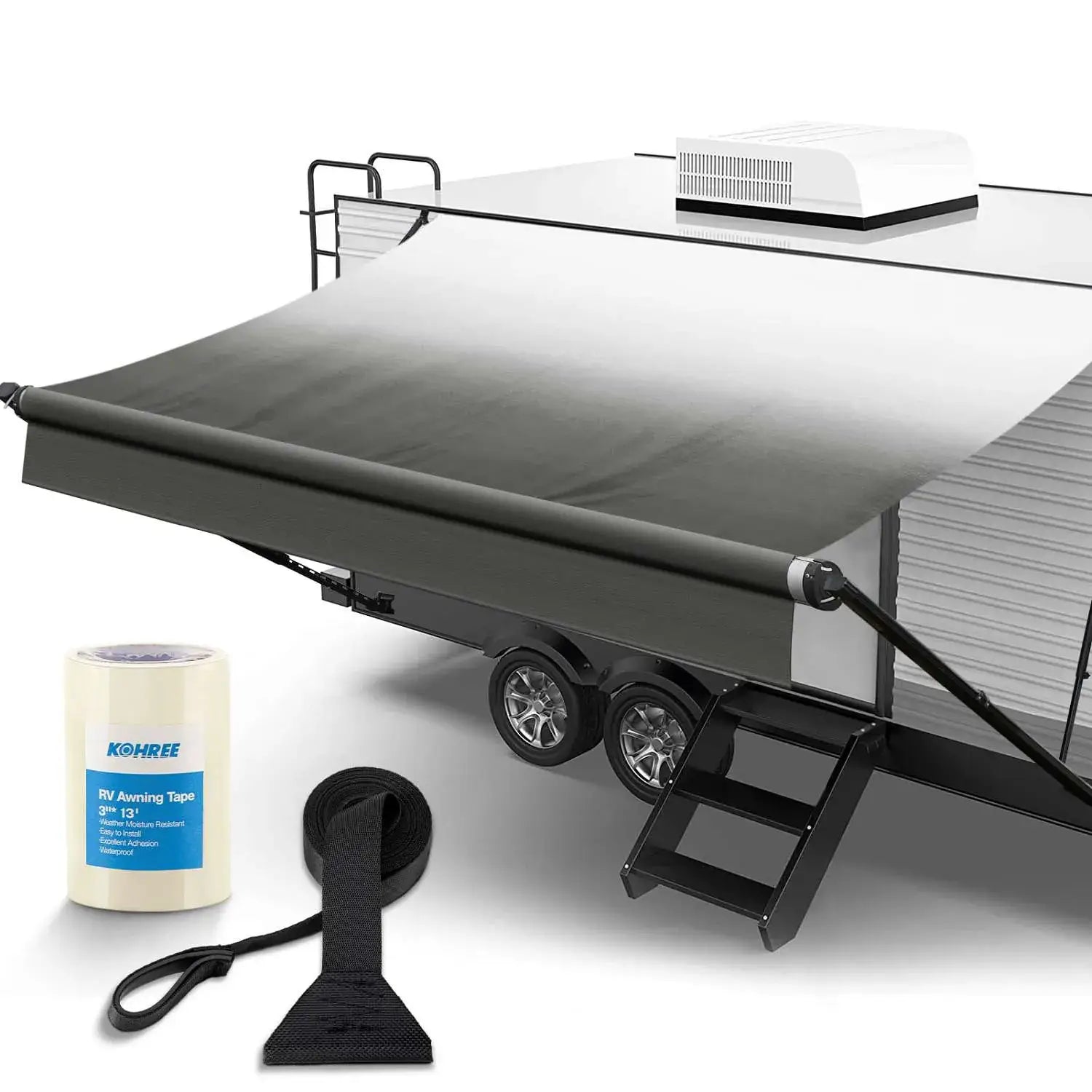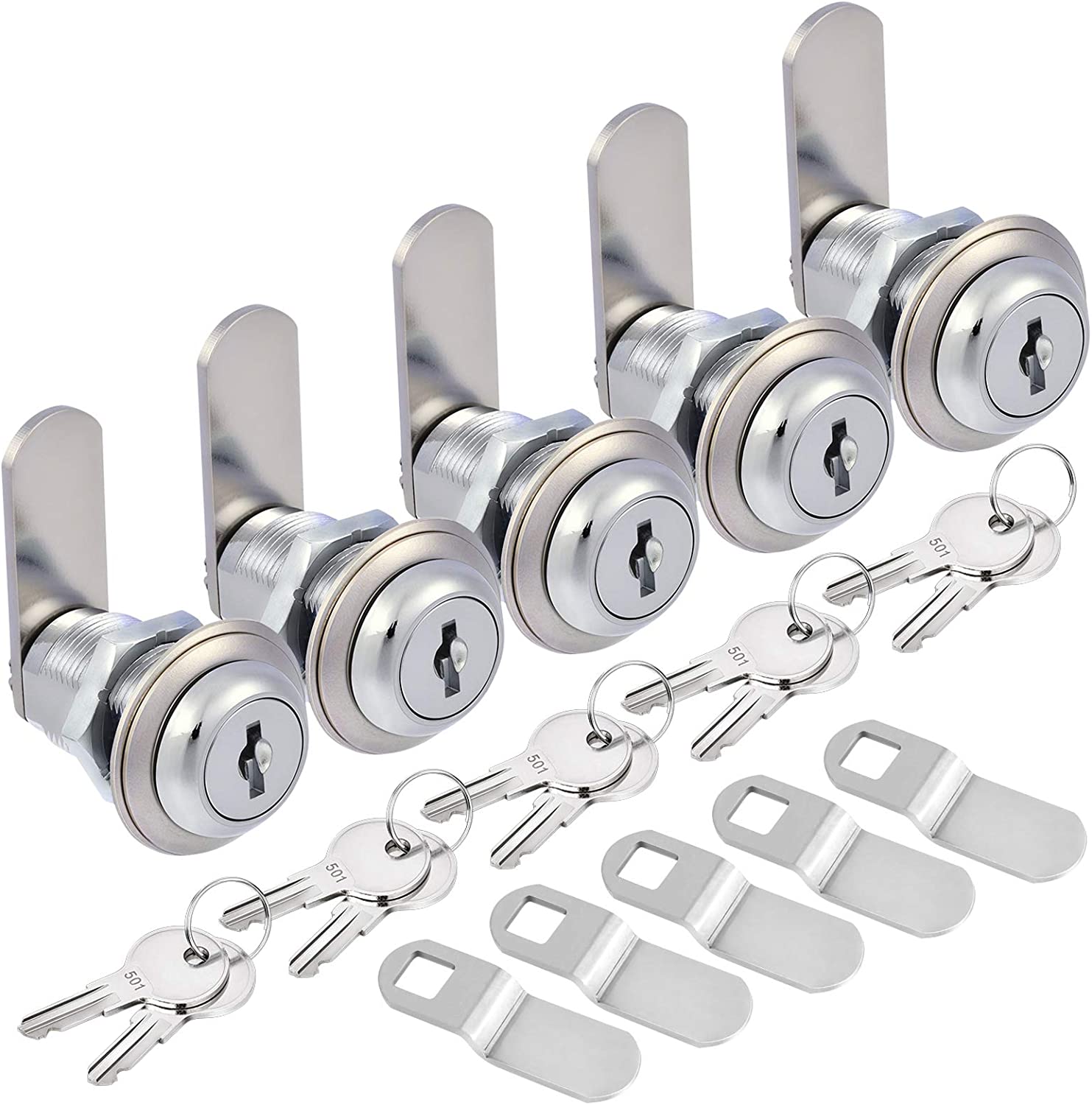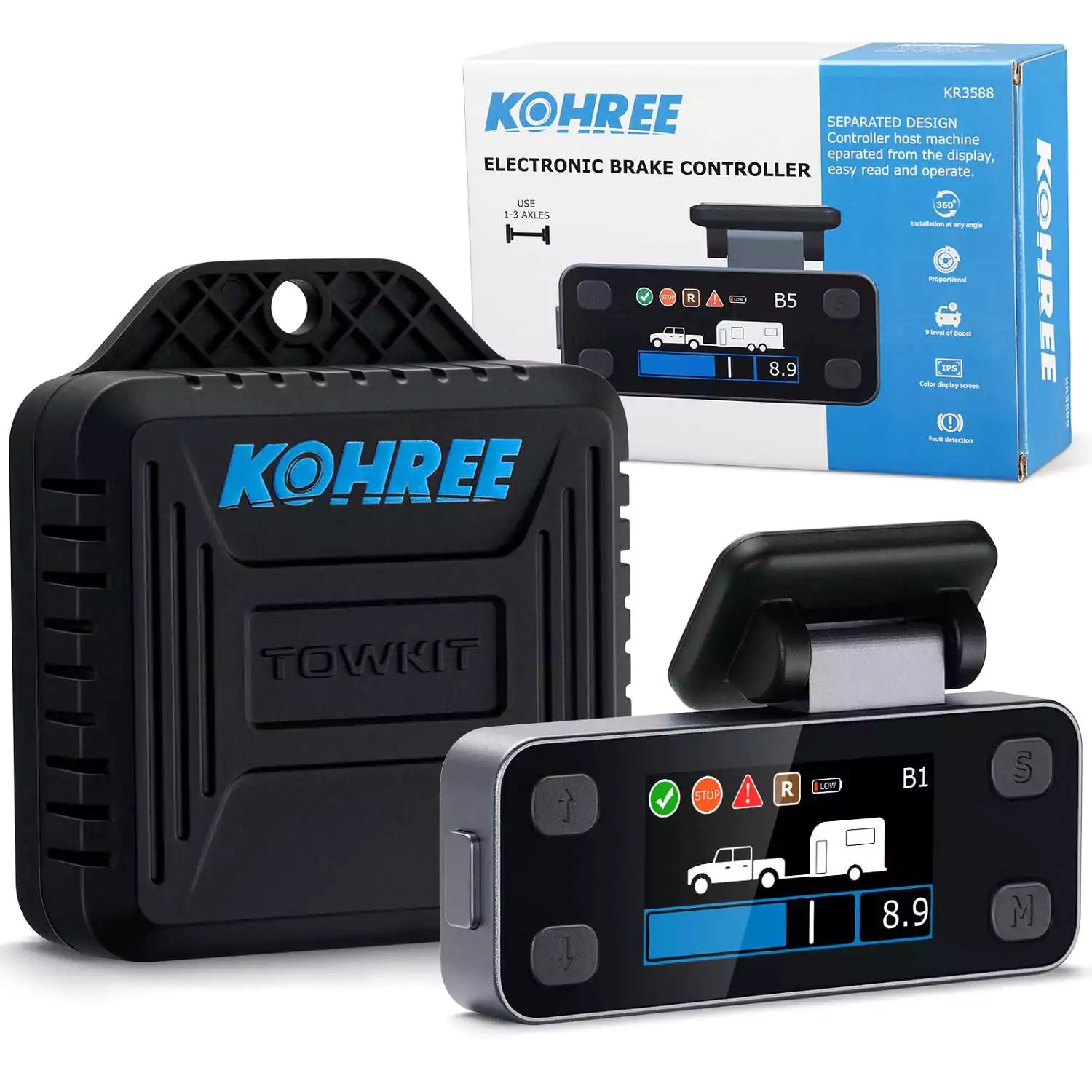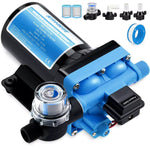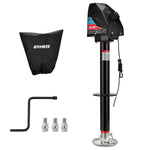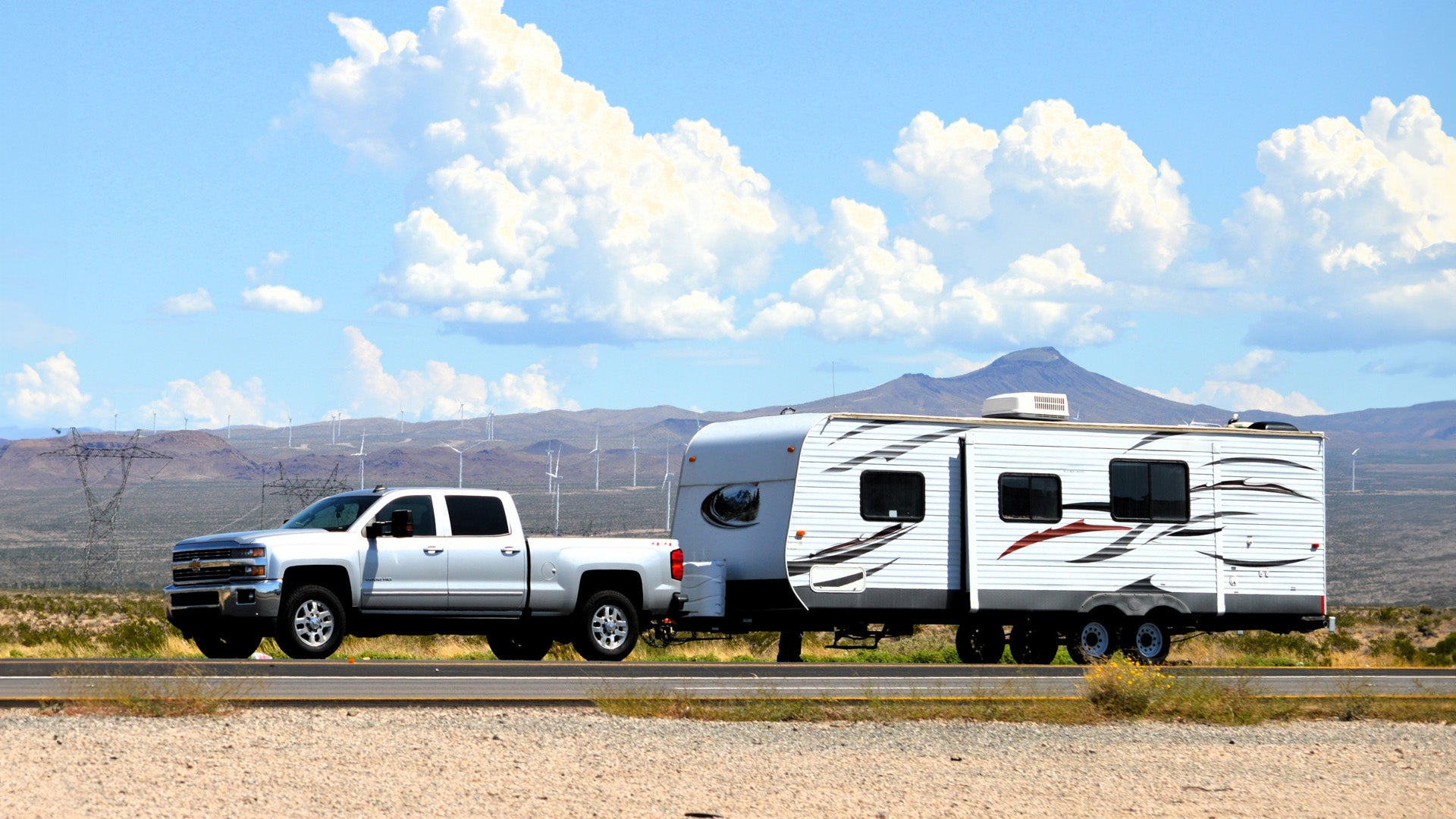A 7-pin trailer plug provides the electrical connections between a tow vehicle and trailer to power lighting and auxiliary functions. This heavy-duty connector and wire harness supplies the necessary electricity for trailers with more advanced systems.
A 7-pin trailer plug is also sometimes referred to as the 7-way trailer connector. It usually comes in round pin configurations. 7-pin plug utilizes seven distinct metal pin contacts to transfer electricity and signals for operating trailer lighting, electric brakes, backup lights, a 12V power supply, and other needs. This expanded capability beyond basic taillights and turn signals make the 7-pin plug well-suited for larger trailers like horse trailers, 5th wheel campers, cargo and utility trailers that need to draw auxiliary power from the tow vehicle.
For an in-depth look at trailer electrical equipment, including types of trailer lights and wiring connectors, check out our previous article on Choosing the Right Trailer Light.
Wiring 7-pin Trailer Plug Preparation
Gather Materials and Tools for Wiring
- 7-pin trailer plug
- Wiring harness
- Wire stripper/crimper tool
- Heat shrink tubing, electrical tape or wire nuts
- Screwdriver
If you find yourself needing to replace one or more lights on your trailer, you have the option to buy individual trailer lights or opt for a comprehensive trailer light kit, which includes the required wiring. Before starting the new installation, ensure that you remove the old lights.
If your towing vehicle only has a 4-way flat connector, you will also need to prepare an additional 4-Way Flat to 7-Way Round Blade Trailer Adapter.
Check the 7-Way Trailer Plug Wiring Diagram
Let's start by familiarizing ourselves with the standard color code for 7-way wiring harnesses before delving into the 7-Way Trailer Plug Wiring Diagram. Having a clear understanding of this color code will simplify the process when making your wiring connections.
It's crucial to note that the color code for wiring harnesses can vary across different industries. Specifically, the wiring standard established by the Society of Automotive Engineers (SAE) may differ from the standard used in the RV industry. However, the general standard for both SAE and the RV industry is as follows:
7-Way Trailer Wiring Harness Diagram (Traditional SAE):

- Green: Right turn/brake light
- Yellow: Left turn/brake light
- Brown: Tail/running lights
- White: Ground wire
- Blue: Brake controller output
- Red or Black: 12V hot lead/Auxiliary power
- Purple: Reverse lights
7-Way Trailer Wiring Harness Diagram (RV Standard):

- Green: Tail/running lights
- Yellow: Reverse Lights
- Brown: Right turn/brake light
- White: Ground wire
- Blue: Brake controller output
- Black: Battery hot lead/Auxiliary power
- Red: Left turn/brake light
How to Wire Trailer Lights with a 7-Way Plug?
Wiring 7-pin trailer lights is a crucial task to ensure the proper functioning and safety of your trailer. The 7-pin connector is commonly used for trailers that have additional features beyond the basic lighting, such as electric brakes or a charging system for the trailer's battery. Here's a step-by-step guide on how to wire 7-pin trailer lights:
Step 1: Identify & Prepare Wires
Strip the insulation from the ends of the wires using a wire stripper. Trim any excess copper strands to ensure a clean connection.

(RV Standard)
Step 2: Connect Wires to Plug
-
Replacing Existing Wiring:
If you're in the process of upgrading your trailer's wiring and there's already a junction box present, typically located near the front, begin by locating it and removing the cover. Take off the nuts from each terminal. Now, proceed to eliminate the old wiring by detaching each terminal from the junction box.
-
Installing a New Junction Box:
For those installing a new junction box, identify a suitable location for installation, preferably on the inside edge of your trailer tongue. Ensure the box is within reach of your wires but positioned away from any components it might interfere with. Crimp ring terminals onto the new wiring, placing them onto their corresponding studs in the junction box. Once done, reinstall the nuts securely.
-
Alternative Wiring Method without Junction Box:
If a junction box isn't available, or you prefer not to install one, a straightforward alternative is to integrate the new wiring harness with your trailer's existing wiring. Achieve this by employing basic crimp/solder splices, which can be covered with heat shrink, tape, or wire nuts for added protection.
Step 3: Test Connections
- Before sealing everything, conduct a thorough test. Connect the trailer plug to the vehicle's socket and check if all lights and functions are working correctly.
- Test the tail lights, turn signals, brake lights, and any other accessories connected to the plug.
Step 4: Secure Wiring
- Bundle and secure the wiring along the trailer frame using zip ties or wire clips.
- Ensure that the wiring is well-protected and won't interfere with the trailer's moving parts.
Step 5: Final Inspection
- Perform a final inspection to make sure all connections are secure, and there are no exposed wires.
- Ensure that the wiring is protected from potential damage during regular use.
Do I Need A Junction Box to Splice Trailer Wires?
For basic splices between a tow vehicle and trailer wiring, junction boxes ain't always mandatory. Just using basic crimp/solder splices covered in heat shrink or tape can be enough for some folks. If the splice won't get regularly exposed to moisture or debris, and you don't need multiple trailers or extra lights, then skipping the box may work out okay. But safety-wise, the junction box is still recommended.
Junction boxes are considered the safest, most reliable choice for splicing trailer wires. They prevent corrosion, vibration damage, and shorts by providing an enclosed space for the connections. If the splice will see a lot of wetness or dirt, you need a junction box no question. They're also required when hooking up multiple trailers or auxiliary lighting.
Junction boxes make inspecting connections easier and offer organized access for testing things out. They also simplify adding more circuits later on. So while not 100% mandatory, boxes give you extra reliability and safety. For best practice, we strongly advise using junction boxes for trailer wire splices.
Kohree 7-Way Trailer Plug with Junction Box

-
Easy Wiring Trailer Plug: The 7-way copper blade, accompanied by an 8 Ft long trailer cord, is molded into a heavy-duty plug, providing a swift and simplified way to connect wires while keeping your trailer wiring organized.
-
Easy Splicing with Junction Box: The solid trailer junction box features 7 color-coded wires, facilitating convenient wiring. Signal lamps, reverse lights, tail lights, and more are easily identifiable for seamless connections.
-
Durable Construction and Flexible Connection: Constructed with conductive copper wire, the junction box and PVC housing ensure flexibility when connecting to your car. Four open and four close rubber grommets offer versatile options to meet your specific wiring needs.
-
7 Color-coded Wires: The 7-way trailer cord wires are coated with durable rubber-like insulation, providing convenience and suitability for most standard trailer wiring.
-
Widely Applications: Ideal for trailers, RVs, campers, caravans, food vans, and other towed vehicles, this heavy-duty trailer wire junction box ensures reliable and organized electrical connections.
How to ground trailer lights?
To ground the trailer wiring, ensure the white ground wire lead on the trailer wiring plug is securely connected to the trailer tongue or frame. This provides a path to the ground through the trailer body. Properly grounding your trailer lights ensures reliable operation and visibility for other drivers when towing.
Where is the fuse for trailer lights?
The fuse for powering trailer lighting is located in the fuse box of the tow vehicle, rather than on the trailer itself. When connected, the trailer lights draw current from the tow vehicle's electrical system through the wiring connector. To protect this circuit, there is a specific trailer lighting fuse in the tow vehicle's fuse box, often labeled for trailer or auxiliary circuits. Trucks or SUVs designed for towing have designated fuse slots for trailer lighting. Checking the owner's manual can help locate the right fuse.
If trailer lights stop working, the first troubleshooting step should be replacing a blown trailer light fuse in the tow vehicle. Using a fuse with the proper amp rating specified for the trailer wiring avoids future blowing. Properly fused trailer lighting circuits prevent electrical damage to the tow vehicle. So the trailer light fuse is a critical component for inspecting to diagnose trailer lighting problems.
How to fix a tail light that is filled with water?
Here are some tips for fixing a trailer tail light filled with water:
- Disconnect the trailer wiring from the tow vehicle before examining the taillight. Turning off power avoids electrical shorts.
- Remove the tail light lens and drain out all standing water from the housing. Inspect for any cracks or gaps in the housing that allowed moisture intrusion. Check the seals and gaskets around the tail light. Use a mild soapy solution and a soft brush to clean the seals and gaskets. Remove any dirt or debris that might compromise the seal.
- Thoroughly dry the inside of the lamp housing with a towel. Use compressed air to blow out any standing water from crevices.
- Clean the lens and LED/bulb contacts with rubbing alcohol to remove condensation and corrosion. Check that contacts are intact.
- Apply dielectric grease to the wire connectors and any crevices that contact the lamp bulb. This prevents future moisture damage.
- Reinstall the dried bulb/LED and apply silicone sealant to the areas where the gaskets or lens may be compromised. Ensure an even and thorough application. Pay special attention to seams and edges.
- When the sealant is fully dry, reconnect the trailer wiring to check all lighting functions, including brake lights, turn signals, and reverse lights.
Regularly checking trailer light lenses and housings for water and corrosion damage can prevent total fixture failure. Promptly fixing any leaks or cracks keeps your lights shining bright.
How to Test Trailer Lights without Vehicle?
If you need a simple and efficient way to test your trailer lights without the tow vehicle, follow these steps. Using a 12-volt power supply, such as a lawnmower battery or any 12-volt battery with sufficient amperage, and a few test leads or wires, you can ensure your trailer lights are fully functional.
Please note that when using jumpers, be sure to avoid direct contact between the positive and negative wires, which will produce arcs and sparks!
Detection Steps
-
Connect Ground: Connect the ground wire (usually white) from the trailer to the negative terminal of the battery via a jump leads. This provides a reference point for the electrical system.
-
Positive Feed Protection: For added safety, consider using a circuit breaker or fuse on the positive feed to protect against overloads. Connect the positive wire from the trailer to the positive terminal of the battery via the circuit breaker.
-
Activate Running Lights: Connect the positive lead to the running lights wire (brown). This should illuminate all running lights on the trailer, including side markers and tail lights.
-
Test Tail Lights Individually: Connect the positive lead to the desired wire for individual testing. For example, connect to the yellow wire for the left tail light and the green wire for the right tail light. This allows you to check each tail light independently.
-
Combine Circuits: To test multiple circuits simultaneously, use additional jump leads or wires to jump from one pin to another. For instance, you can jump from the running lights pin to a tail light pin to activate both functions at once.
Benefits of Using a Battery to Check Trailer Lights
- Convenient for testing without the tow vehicle.
- Enables constant power supply for troubleshooting.
- Helps isolate trailer lighting issues from the tow vehicle.
- No need to press the brake pedal to check brake lights.
This battery-powered testing method provides a practical and effective way to troubleshoot and ensure your trailer lights are in working order.
